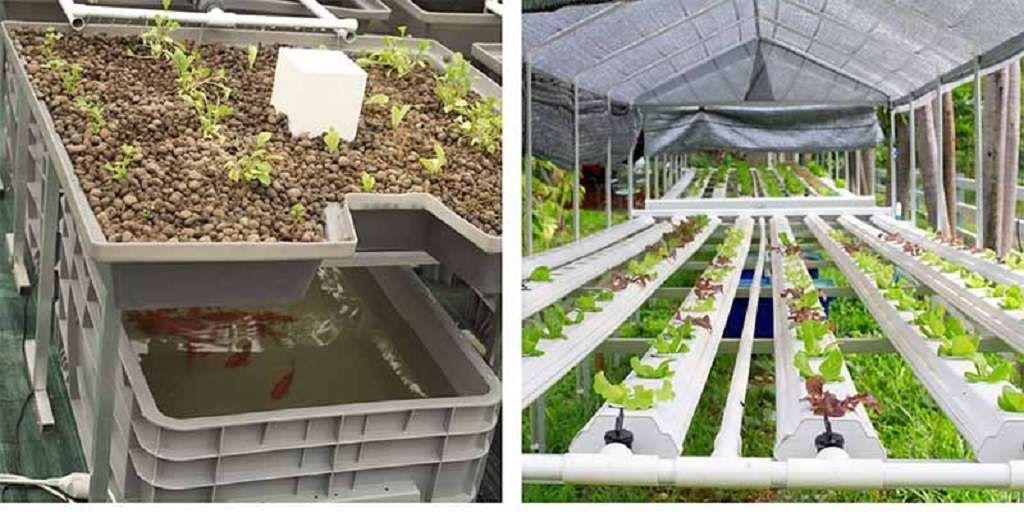
In a world increasingly concerned with sustainable food production and resource conservation, hydroponics and aquaponics have emerged as innovative and promising alternatives to traditional soil-based agriculture. Both methods offer unique advantages in terms of environmental impact, resource efficiency, and yield potential. However, they also have distinct characteristics and requirements. This article will delve into the intricacies of hydroponics and aquaponics, comparing and contrasting their principles, benefits, and challenges to help you determine which method might be best suited for your needs.
Understanding Hydroponics
Hydroponics is a method of growing plants in a nutrient-rich water solution without the use of soil. The word “hydroponics” is derived from the Greek words “hydro” (water) and “ponos” (labor). In this system, plants are typically grown in inert media such as perlite, rockwool, or coconut coir, which provide structural support but do not contribute nutrients. The nutrient solution is carefully formulated to provide the necessary elements for plant growth, including nitrogen, phosphorus, potassium, and micronutrients.
How Hydroponics Works
Hydroponic systems can be categorized into various types, each with its own unique approach to delivering nutrients to the plants. Some common types include:
- Deep Water Culture (DWC): In this system, the plant roots are suspended in an oxygenated nutrient solution.
- Ebb and Flow: The nutrient solution is periodically flooded into the growing medium and then drained away, allowing for aeration of the roots.
- Drip Irrigation: Nutrient solution is delivered directly to the plant roots through a drip system.
- Aeroponics: Plant roots are suspended in the air and misted with a nutrient solution.
Advantages of Hydroponics
- Resource Efficiency: Hydroponics can significantly reduce water usage compared to traditional agriculture, as the nutrient solution can be recirculated and reused.
- Controlled Environment: Hydroponic systems allow for precise control over environmental factors such as temperature, humidity, 1 and light, leading to faster growth rates and higher yields.
1. www.answers.com
- Reduced Pest and Disease Problems: The controlled environment and the absence of soil can minimize the risk of pests and diseases, reducing the need for chemical pesticides.
- Year-Round Production: Hydroponic systems can be operated indoors, allowing for year-round production regardless of weather conditions.
Disadvantages of Hydroponics
- Initial Setup Costs: Setting up a hydroponic system can be more expensive than traditional gardening, requiring specialized equipment and materials.
- Maintenance Requirements: Hydroponic systems require regular monitoring and maintenance, including pH adjustments and nutrient solution replenishment.
- Technical Expertise: Successful hydroponic cultivation requires a good understanding of plant nutrition and environmental control.
Understanding Aquaponics
Aquaponics is a sustainable food production system that combines aquaculture (raising aquatic animals) with hydroponics. In an aquaponics system, fish are raised in a tank, and their waste products, primarily ammonia, are converted into nitrates by beneficial bacteria. These nitrates are then utilized by plants grown in a hydroponic system, creating a symbiotic relationship between the two organisms.
How Aquaponics Works
The aquaponics system typically consists of a fish tank, a grow bed for plants, and a biofilter. The fish waste is broken down by bacteria in the biofilter, which converts ammonia into nitrites and then into nitrates. The nutrient-rich water is then circulated to the grow beds, where plants absorb the nutrients. The cleaned water is returned to the fish tank, completing the cycle.
Advantages of Aquaponics
- Sustainability: Aquaponics is a highly sustainable system, as it minimizes waste and maximizes resource utilization.
- Reduced Environmental Impact: Aquaponics eliminates the need for chemical fertilizers and pesticides, reducing the environmental impact of food production.
- Multiple Outputs: Aquaponics provides both fish and plants, offering a diverse and nutritious food source.
- Educational Value: Aquaponics systems can be used as educational tools to teach about ecology, sustainability, and food production.
Disadvantages of Aquaponics
- Initial Setup Costs: Setting up an aquaponics system can be more expensive than traditional gardening, requiring specialized equipment and materials.
- Maintenance Requirements: Aquaponics systems require regular monitoring and maintenance to ensure water quality and prevent imbalances.
- Technical Expertise: Successful aquaponics cultivation requires a good understanding of fish health, water chemistry, and plant nutrition.
Read More Also: Pretty Flower Combinations: Creating Breathtaking Displays in Your Garden
Hydroponics vs. Aquaponics: A Comparison
| Feature | Hydroponics | Aquaponics |
|---|---|---|
| Definition | Growing plants in nutrient-rich water without soil | Combining aquaculture and hydroponics |
| Nutrient Source | Chemical fertilizers | Fish waste |
| Environmental Impact | Lower than traditional agriculture | Highly sustainable |
| Resource Efficiency | High | Very high |
| Yield Potential | High | High |
| Initial Costs | Moderate | Higher |
| Maintenance Requirements | Moderate | Higher |
| Technical Expertise | Required | Required |
Conclusion
Both hydroponics and aquaponics offer innovative and sustainable approaches to food production. Hydroponics provides greater control over the growing environment and nutrient delivery, while aquaponics offers a more self-sustaining and environmentally friendly system. The choice between these two methods depends on various factors, including available resources, desired outcomes, and personal preferences. By carefully considering the advantages and disadvantages of each method, you can make an informed decision about which one is best suited for your needs.
FAQ
Which method is more expensive to set up?
Aquaponics generally has higher initial setup costs due to the additional requirements for raising fish.
Which method is more environmentally friendly?
Aquaponics is generally considered more environmentally friendly due to its closed-loop system and reduced reliance on external inputs.
Which method is easier to maintain?
Hydroponics can be easier to maintain for some individuals, as it often requires less frequent monitoring and adjustments.
Can I grow any type of plant with hydroponics or aquaponics?
Most plants can be grown with hydroponics, while aquaponics is more suitable for plants with lower nutrient requirements.
Do I need any special skills to operate these systems?
Both methods require a basic understanding of plant nutrition and environmental control.

